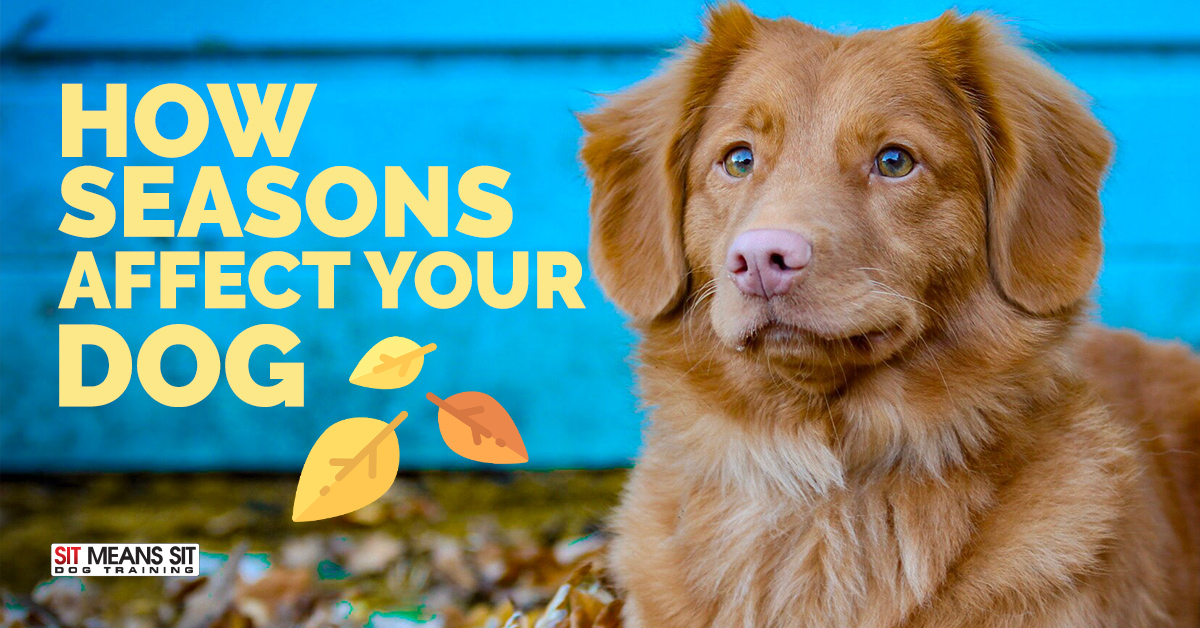
How Seasons Affect Your Dog
Like many humans, dogs moods can shift when the temperatures rise and fall. Whether it be excessive heat, cold, or storms – your pup is sure to notice. Some dogs don’t take to these changes very well, and here’s how to deal with it.
The Change in Seasons
When the weather gets warmer, some pups may thrive, while others may long for cooler frostier temperatures. While you should always be precautious of accessive heat for dogs, some are more tolerant to it than others.
- Brachycephalic breeds have a harder time breathing than most dogs so they should be in cool shady areas as much as possible.
- Larger breeds are also more susceptible to negative heat effects due to how much energy they use and weight they have to carry.
- Longhaired breeds pretty much have a blanket as a coat so it shouldn’t come as a surprise that they don’t love an accessive amount of sun time either.
Now on the flip side, cold climates are some dogs cup of tea while other pooches may need doggy booties and even coats to keep warm.
- Longhaired or double coat breeds tend to love cooler weather since they have the fur to ensure it
- Northern breeds thrive in the cold as well because it’s where they were bred to live
These types of furry friends may get more playful or energetic during cooler temperatures because of how much they enjoy the weather.
Relocating to a New Climate?
People move all the time, and as a pet parent, you probably know that moving housing situations with a dog can be a bit stressful. One thing many people forget to consider is the possible change in climate depending on where you’re moving from where you were. If you once lived in a year-long warm area and then end up moving to an area that has colder temperatures more often on top of brutal winters – it can affect your dog’s mood.
Some canines may become less active for a while or even show signs of irritation to their new climate. A dog who is not used to cold environments may become lethargic as they try to get familiar with their new home. This is good to know, so you don’t become too worried and think something is seriously wrong with Fido if it happens. If this lasts for an extended time or you notice other weird changes in your pooch, take them to their vet to ensure it’s nothing serious.
How to Help Fido Adjust
If your pooch hates the heat, there are a few things you can do to increase their comfortability.
- Take your pup on walks early in the morning and later in the evening, instead of during the hottest parts of the day
- Make sure your dog is adequately hydrated and has access to water at all times
- Consider investing in a raised canvas platform dog bed that gives them a cooling alternative to regular beds
- Never leave your dog in the car unattended, you never want to make this a habit and the heat in a vehicle can rise quicker than you’d think
For colder weather acclimation you can try a doggy sweater, coat, shirt, jacket, or booties can help keep your pooch warm. Just be careful to not leave your dog unattended in their cold-weather gear. As well, you should ensure the item fits correctly and isn’t too tight that it cuts off circulation or causes them to be uncomfortable – or is too loose, causing them to trip and fumble around in it.
No matter what kind of climate your dog prefers, you want to ensure they’re happy and healthy no matter the temperature. Paying attention to any changes in your dog’s normal mood or energy level will help you determine if Fido needs some help acclimating.
